Refine search
Actions for selected content:
8126 results in Fluid dynamics and solid mechanics
UNSTEADY BOUNDARY LAYERS: CONVECTIVE HEAT TRANSFER OVER A VERTICAL FLAT PLATE
- Part of
-
- Journal:
- The ANZIAM Journal / Volume 50 / Issue 4 / April 2009
- Published online by Cambridge University Press:
- 04 December 2009, pp. 541-549
-
- Article
-
- You have access
- Export citation
ANZ volume 50 issue 4 Cover and Back matter
-
- Journal:
- The ANZIAM Journal / Volume 50 / Issue 4 / April 2009
- Published online by Cambridge University Press:
- 04 December 2009, pp. b1-b9
-
- Article
-
- You have access
- Export citation
REFLECTED BACKWARD STOCHASTIC DIFFERENTIAL EQUATIONS DRIVEN BY A LÉVY PROCESS
- Part of
-
- Journal:
- The ANZIAM Journal / Volume 50 / Issue 4 / April 2009
- Published online by Cambridge University Press:
- 04 December 2009, pp. 486-500
-
- Article
-
- You have access
- Export citation
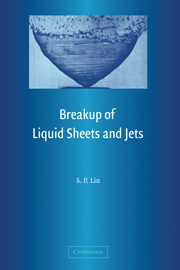
Breakup of Liquid Sheets and Jets
-
- Published online:
- 02 December 2009
- Print publication:
- 21 August 2003
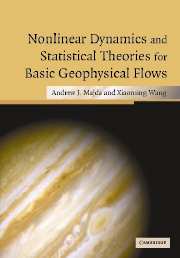
Nonlinear Dynamics and Statistical Theories for Basic Geophysical Flows
-
- Published online:
- 30 November 2009
- Print publication:
- 11 May 2006

The Navier-Stokes Equations
- A Classification of Flows and Exact Solutions
-
- Published online:
- 16 November 2009
- Print publication:
- 25 May 2006
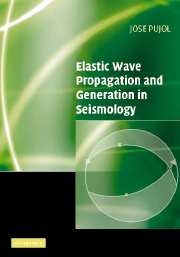
Elastic Wave Propagation and Generation in Seismology
-
- Published online:
- 12 November 2009
- Print publication:
- 01 May 2003
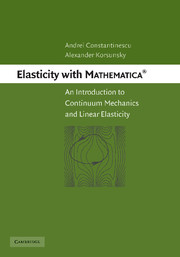
Elasticity with Mathematica ®
- An Introduction to Continuum Mechanics and Linear Elasticity
-
- Published online:
- 11 November 2009
- Print publication:
- 08 October 2007
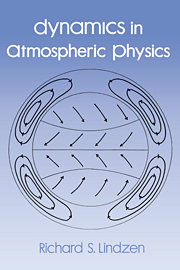
Dynamics in Atmospheric Physics
-
- Published online:
- 10 November 2009
- Print publication:
- 29 June 1990
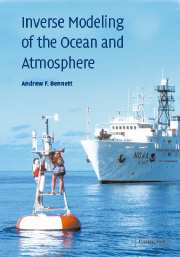
Inverse Modeling of the Ocean and Atmosphere
-
- Published online:
- 09 November 2009
- Print publication:
- 27 June 2002
PRACTICAL RUNGE–KUTTA METHODS FOR SCIENTIFIC COMPUTATION
- Part of
-
- Journal:
- The ANZIAM Journal / Volume 50 / Issue 3 / January 2009
- Published online by Cambridge University Press:
- 03 November 2009, pp. 333-342
-
- Article
-
- You have access
- Export citation
COMPONENTS AND PHASES: MODELLING PROGRESSIVE HYDROTHERMAL ERUPTIONS
- Part of
-
- Journal:
- The ANZIAM Journal / Volume 50 / Issue 3 / January 2009
- Published online by Cambridge University Press:
- 03 November 2009, pp. 365-380
-
- Article
-
- You have access
- Export citation
MODELLING SEA ICE GROWTH
- Part of
-
- Journal:
- The ANZIAM Journal / Volume 50 / Issue 3 / January 2009
- Published online by Cambridge University Press:
- 03 November 2009, pp. 306-319
-
- Article
-
- You have access
- Export citation
ANZ volume 50 issue 3 Cover and Back matter
-
- Journal:
- The ANZIAM Journal / Volume 50 / Issue 3 / January 2009
- Published online by Cambridge University Press:
- 03 November 2009, pp. b1-b2
-
- Article
-
- You have access
- Export citation
RECONSIDERING TRIGONOMETRIC INTEGRATORS
- Part of
-
- Journal:
- The ANZIAM Journal / Volume 50 / Issue 3 / January 2009
- Published online by Cambridge University Press:
- 03 November 2009, pp. 320-332
-
- Article
-
- You have access
- Export citation
A CONCEPTUAL MODEL FOR THE ORIGINS OF GEOTHERMAL AND VOLCANIC ACTIVITY IN THE NORTH ISLAND OF NEW ZEALAND
- Part of
-
- Journal:
- The ANZIAM Journal / Volume 50 / Issue 3 / January 2009
- Published online by Cambridge University Press:
- 03 November 2009, pp. 421-425
-
- Article
-
- You have access
- Export citation
EFFECTIVE SLIP LENGTH OF NANOSCALE MIXED-SLIP SURFACES
- Part of
-
- Journal:
- The ANZIAM Journal / Volume 50 / Issue 3 / January 2009
- Published online by Cambridge University Press:
- 03 November 2009, pp. 381-394
-
- Article
-
- You have access
- Export citation
ORTHOGONAL FUNCTIONS AND ZERNIKE POLYNOMIALS—A RANDOM VARIABLE INTERPRETATION
- Part of
-
- Journal:
- The ANZIAM Journal / Volume 50 / Issue 3 / January 2009
- Published online by Cambridge University Press:
- 03 November 2009, pp. 435-444
-
- Article
-
- You have access
- Export citation
ANZ volume 50 issue 3 Cover and Front matter
-
- Journal:
- The ANZIAM Journal / Volume 50 / Issue 3 / January 2009
- Published online by Cambridge University Press:
- 03 November 2009, pp. f1-f2
-
- Article
-
- You have access
- Export citation
A MODEL OF ION TRANSPORT IN CONJUGATED POLYMERS
- Part of
-
- Journal:
- The ANZIAM Journal / Volume 50 / Issue 3 / January 2009
- Published online by Cambridge University Press:
- 03 November 2009, pp. 355-364
-
- Article
-
- You have access
- Export citation
